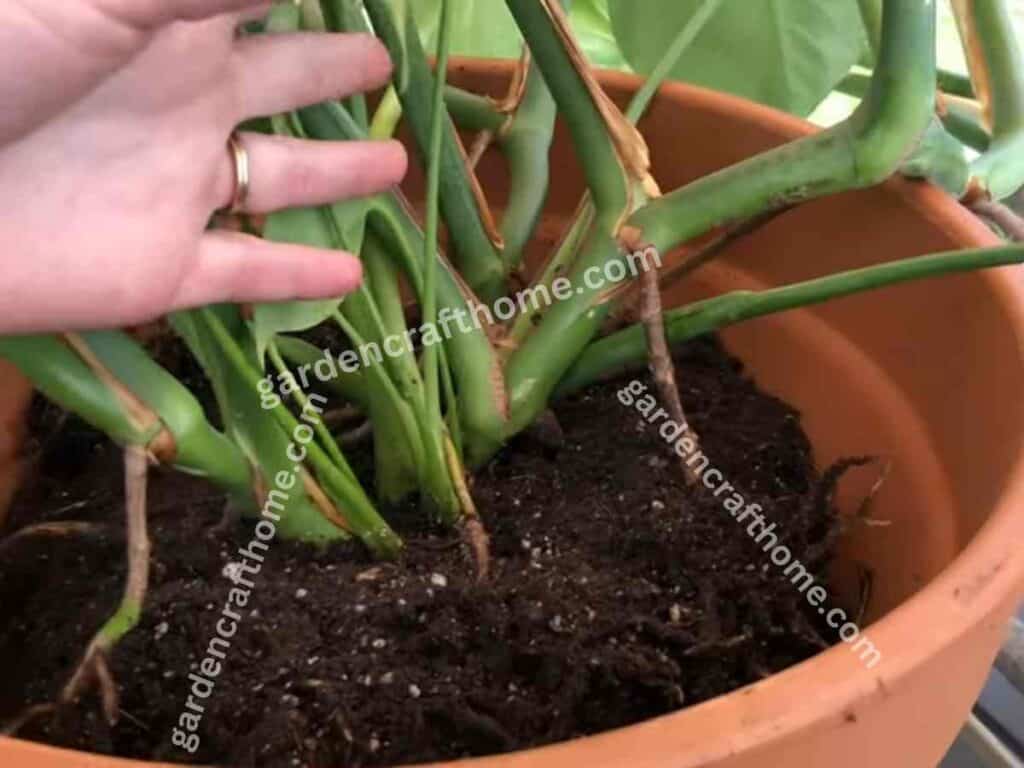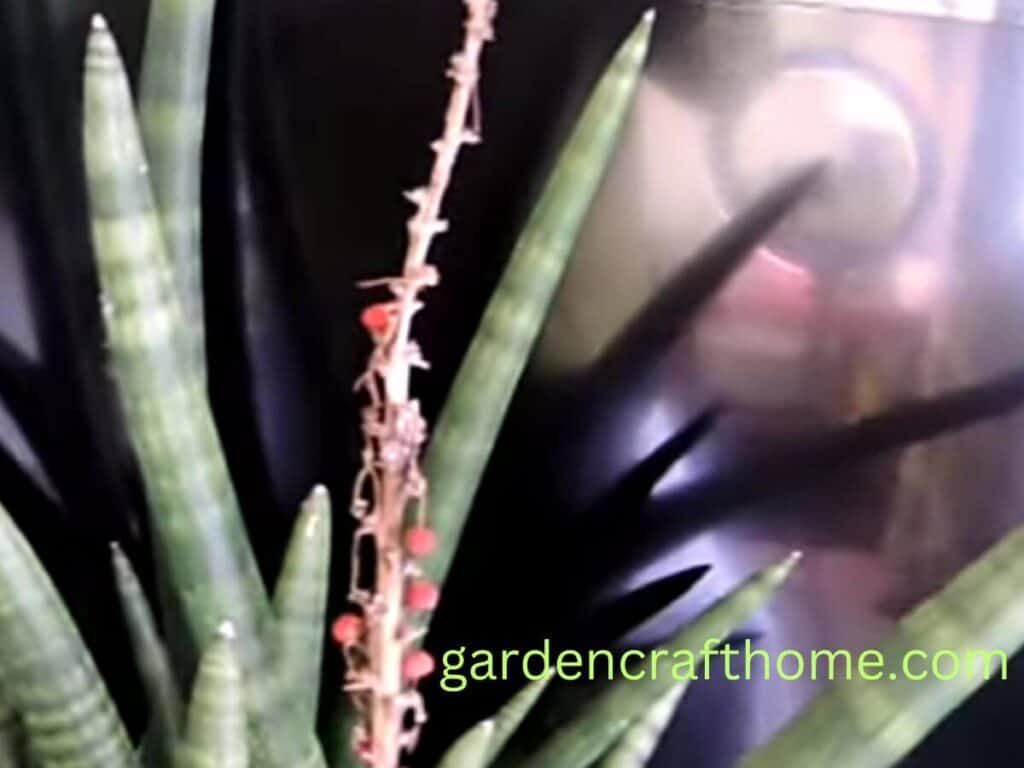To fertilize Monstera, we use the proper fertilizer suitable for our Monstera plant and gently apply it to the soil by following the manufacturer’s instructions.
But in this article, I will load you with instructions and guidelines to follow during fertilization.
You will learn the importance of fertilization, how and how to fertilize, the required dosage, the best fertilizer, etc. Use our table of contents to see more of this post.
If interested, click here to read how to fertilize a bonsai tree.
Why Is It Important To Fertilize Monsteras?
Fertilizer provides nutrient substances for the excellent health and growth of Monstera plants.
Monstera also need nutrients to help them carry out necessary processes and build structural compounds.
Fertilizers on Monstera promote color, vitality, foliage development, and general health.
Preventing pest or disease attacks from making your Monstera an ideal place to live is essential.
All plants need large amounts of three elements called macronutrients. These are nitrogen (N), phosphorus (P), and potassium (K).
In nature, plants have access to an almost unlimited supply of nutrients.
Rain and the decomposition of organic matter provide them with the food that helps them grow and produce new leaves and flowers.
In nature, nutrients continue to circulate throughout the ecosystem.
In the soil, nutrients transform into a form that plants can assimilate and absorb.
When Should I Fertilize Monstera?
You should fertilize Monstera throughout the entire active growing season, which in most cases runs from April/May to September October.
The active growing season is when the plant develops new leaves and roots. The plant grows the fastest and needs a good supply of nutrients.
I recommend fertilizing your Monstera every 2 to 3 weeks during the active growing season. You can also opt for a monthly application using a slow-release fertilizer.
It is essential to fertilize your Monstera at the right time to allow it to take full advantage of the nutrients provided.
On the other hand, avoid fertilizing your plant during the winter. The Monstera goes dormant at this time and does not require any input.
Fertilizing in winter could even burn and damage your plant’s roots. Growth slows or stops during this time, and nutrient needs drop dramatically.
In reality, it is a continuously growing plant. If the light and heat conditions allow it, the vegetative phase can continue without stopping throughout the year.
In this case, it is necessary to continue fertilizing even in autumn/winter, possibly reducing the fertilizer concentrations to half the dose or thinning out the applications.
For example, if you fertilize with liquid/soluble fertilizer once every 2 weeks following the dosage written on the brand label, during the winter, you can halve the dosage or fertilize once a month.
Attention: When you fertilize with these fertilizers, you must fertilize the plant abundantly so that each application acts as a “light rinsing” of any unused salts in the soil.
Always pour 10% (approximately) more solution than the soil can hold. By doing so, you reduce the risk of toxic accumulations over time.
If you use programmed-release fertilizer, I recommend spreading the product on the surface once in April and once (at half dosage) in October.
In summary, fertilize your Monstera deliciosa between the beginning of spring and the beginning of autumn, every 15 days to 1 month, and suspend all fertilization during the winter.
By following these recommendations, you will nourish your plant perfectly.
also, read How To Quickly Grow Monstera From Seed
How Do We Know If Monstera Needs Fertilizer?
Monsteras are vigorous and beautiful plants that, logically, you like to see green all year round.
When they have some nutritional deficiency, it is very possible that you will not achieve this objective and that they will look droopy and with yellow leaves or brown.
It is best to verify that it is not a problem of another type, for example, due to excessive watering (which is usually very common).
Suppose you verify that the problem is indeed related to nutrient deficiency. In that case, it will be time to apply the selected fertilizer.
If you use a liquid version, you should begin to notice the results quickly. In this case, homemade organic matter such as homemade compost will show changes after some time.
Fertilizer for Monstera is essential care and beneficial when you have a specimen of this species at home.
Taking advantage of the information we leave you here and establishing a schedule adapted to your requirements will be your most profitable strategy.
Always remember to pay close attention to the changes she shows you and act based on them.
Because although the theory is perfect, the reality is that no two monstera are the same.
And everything that happens around them will influence their behavior, even in the face of fertilizers. Go ahead!
also, read How Often To Water Spider Plants
How To Fertilize Monstera Step By Step
Now you know the type of fertilizer needed for fertilizing a Monstera, it is time to apply those fertilizers to the soil; follow the steps below and stay tuned.
Check Soil Moisture:
Deepen your finger into the soil about an inch to check if your soil is moist.

If the soil is wet, then it is ready for fertilization. Still, if the soil is not wet, it is recommended you water it 1 to 2 days or 8 hours before fertilization.
Water the plant first to prepare the soil for nutrient absorption. The important thing is to let excess water drain completely before applying fertilizer.
Note if you are using liquid fertilizer and want to dilute it in the water, there is no need to water your plant before fertilizing; the water you use directly will water the plant.
Choose The Fertilizer:
Choose between liquid and solid fertilizer to know the best for you.
A liquid fertilizer might be challenging to maintain its measure, but a solid fertilizer is easy to determine its measurement.
Pick The Right Fertilizer:
Use a balanced liquid fertilizer for Monstera with an NPK ratio of 20-20-20. Or a fertilizer that favors nitrogen over phosphorus and potassium.
For example, the NPK value must be 30-10-20, but Ensure it includes essential micronutrients.
Read Products Instruction
All products are not the same and differ in chemical rate. You must read the manufacturer’s instructions carefully so you won’t over-fertilize or under-fertilize your plant.
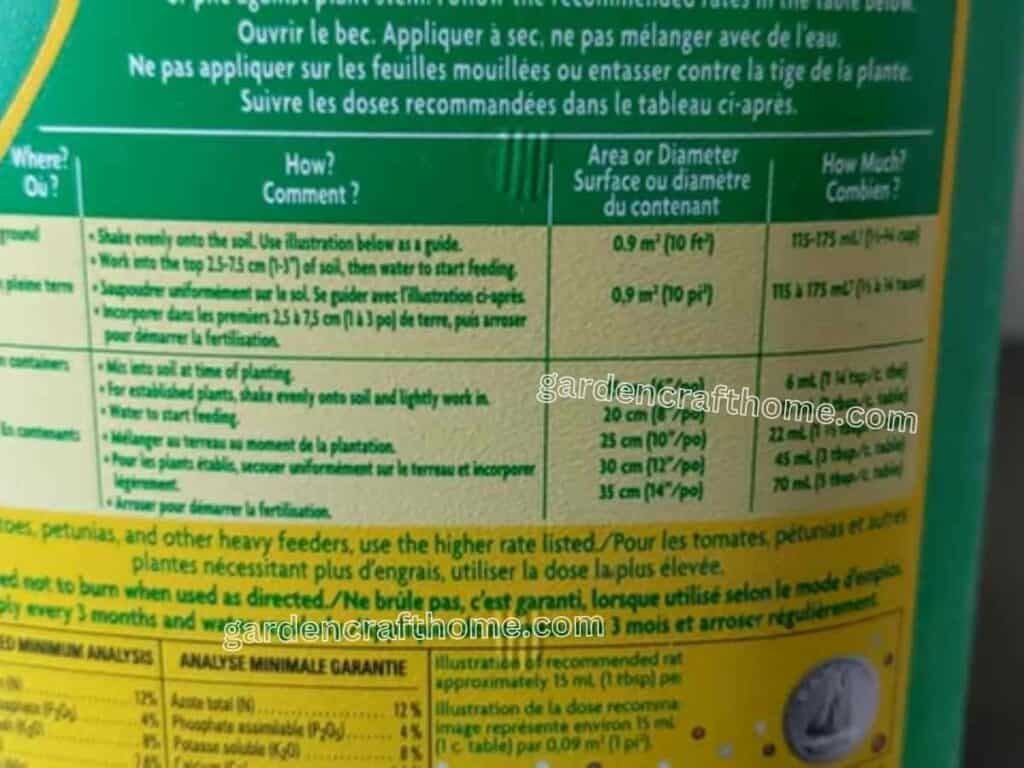
The instructions written in the product contain the following;
- Dilution rate
- Fertilization frequency
- Time of fertilization
- Precautions to take
- Dosage
Measuring And Diluting The Fertilizer
If you opt for liquid fertilizer, take the required measurements and dilute the fertilizer according to the manufacturer’s instructions.
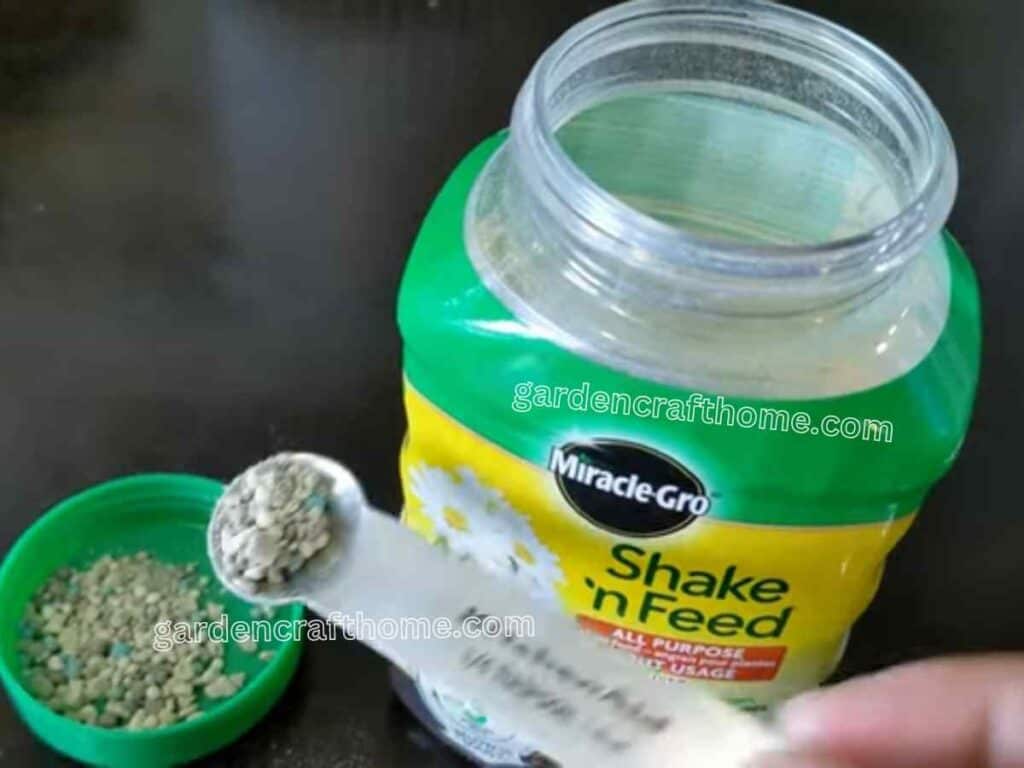
Some liquid fertilizers might require you to dilute them in water and use them to water your monstera plants.
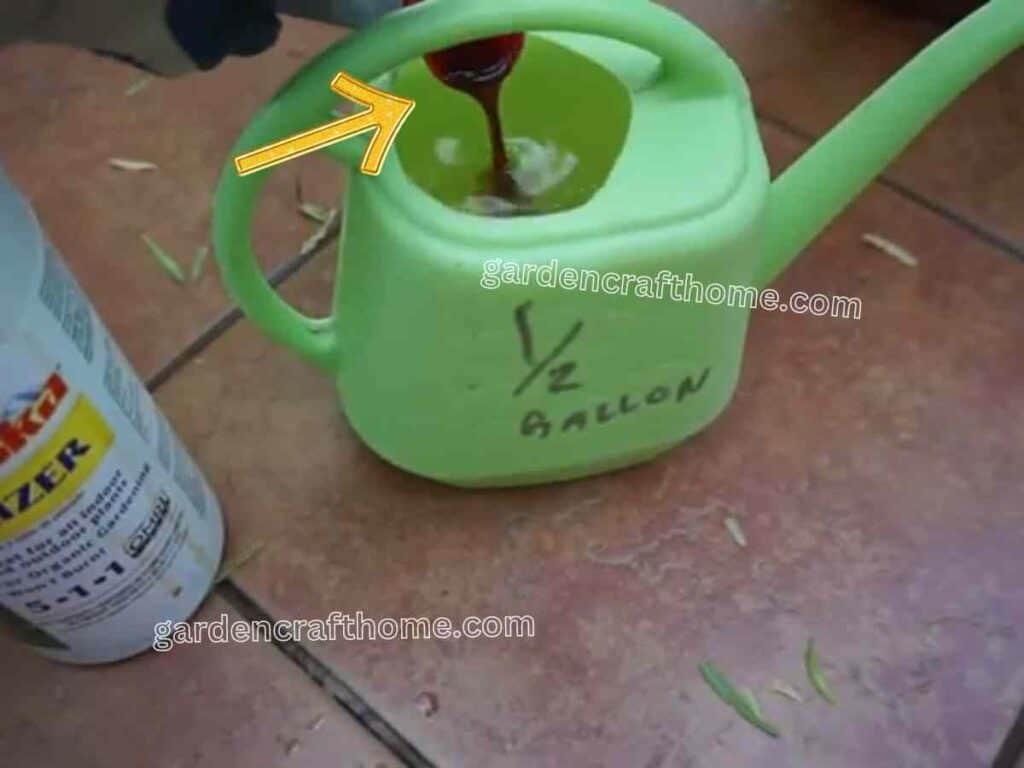
Suppose you decide to use a solid fertilizer. In that case, all you have to do is take the required measurements with a measuring spoon or cup according to the manufacturer’s instructions.
Fertilization Time
The best time to fertilize your plant is before 8 a.m. or later at night. Sunlight is responsible for this and many other things that happen with your plant.
Since the soil is still pretty cool, this gives your plants the best chance to absorb the fertilizer throughout the day as they undergo photosynthesis and actively take in water and nutrients.
Fertilization in the afternoon or night is not necessarily harmful as watering in the afternoon and night is not necessarily harmful, but ricks attach to it.
But morning fertilization is more optimal and acceptable as it promotes effective nutrient absorption and reduces the risk of fungal issues.
Applying Fertilizer To Monstera
How to apply the fertilizer to monstera plants: For liquid fertilizer, pour the fertilizer directly into the soil to avoid the fertilizer from touching the leaf or the stem, as this can harm them.

If you use solid fertilizer, use your hand to remove 4 cm of your Monstera soil.
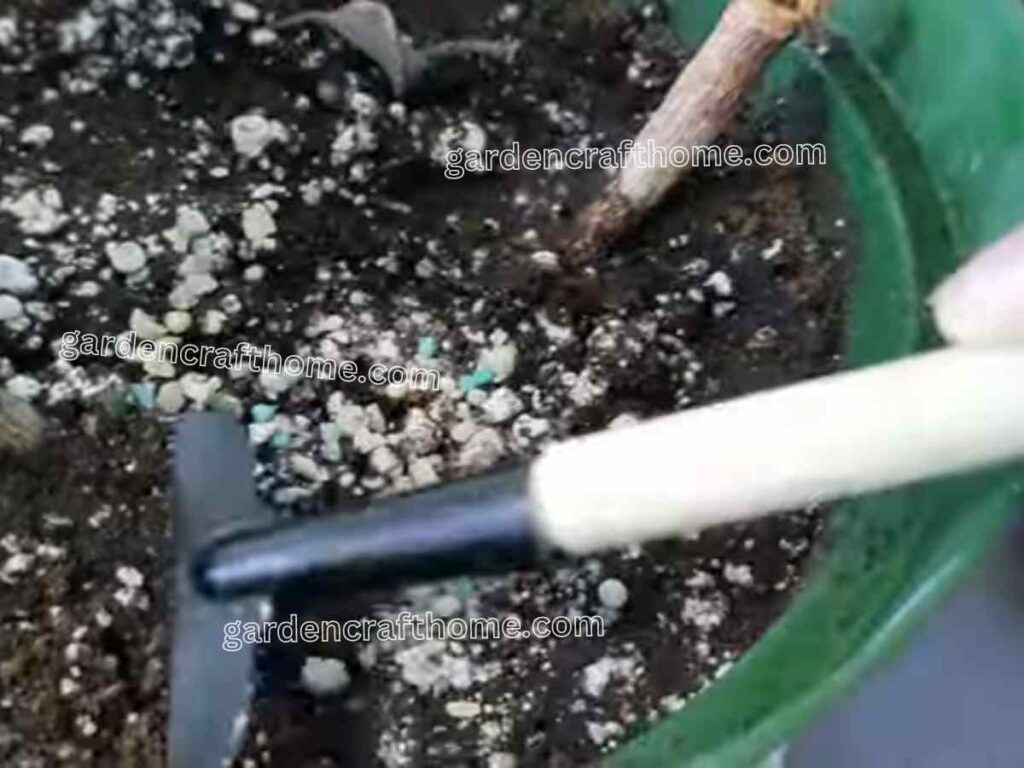
After that, gently spray the solid fertilizer on the soil and avoid it from touching the stem and the leaf.
Then, use the soil you remove to cover the fertilizer. It must not really be deep.
If you are not comfortable with removing 4 cm of your soil, consider pouring the fertilizer and then using your hand or a small garden rake to mix and cover the fertilizer. It must not really go deep.
Watering After Fertilizing:
After fertilization, water the soil lightly to ensure the fertilizer is adequately distributed, but make sure the water is small.
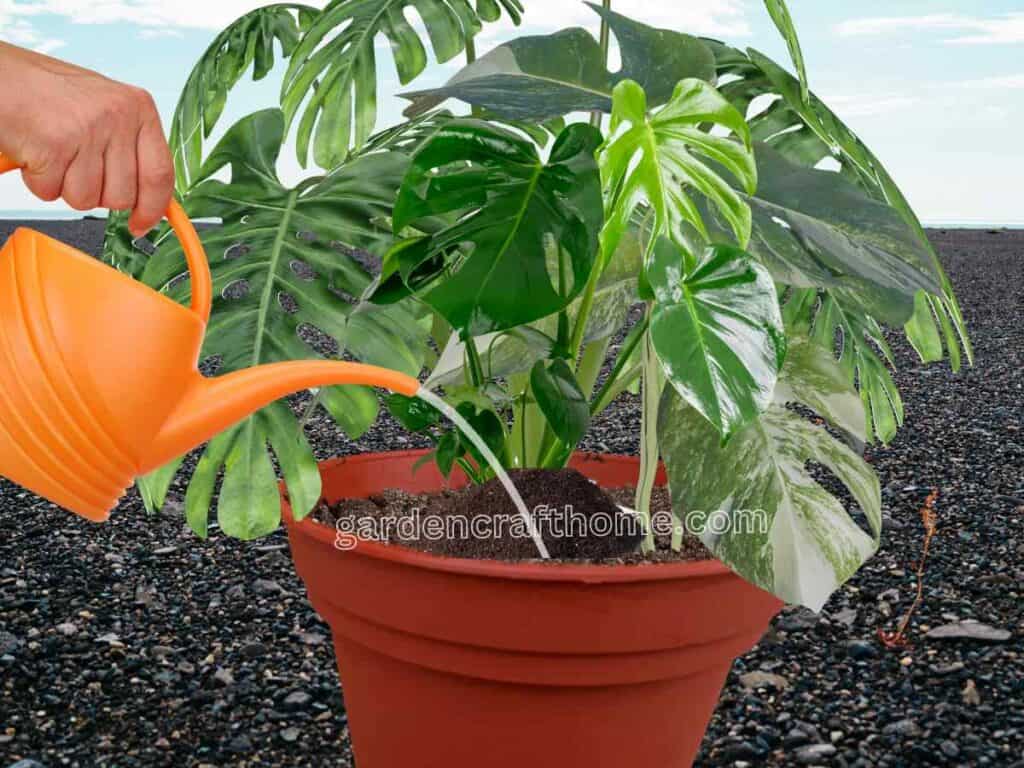
This step is only applicable to those who use solid fertilizer and those who mix their liquid fertilizer with little water.
But if you mix your fertilizer with enough water, then this process is not for you.
Stagnant fertilization might cause root burn, but this happens occasionally.
Monitor Your Plant
Keep an eye on your Monstera plant to see if any adverse effects are leading to yellowing leaves.
Nutrient deficiency or over-fertilization could cause harm to your Monstera plant, causing the leaf to turn yellow.
I have already covered this topic in another blog post; if you are interested, click here to learn.
What Are The Signs Of Overfertilizing Monstera?
It is crucial to fertilize your Monstera deliciosa adequately to avoid harmful excess.
When you fertilize Monstera too often, at too high a dosage, or in the wrong way, the amount of salts can accumulate in the soil, reaching toxic thresholds for the plant.
In these cases, we talk about the accumulation of salts, and it is essential to prevent it to avoid a wide variety of apparent damages, such as:
- Burnt leaves (brown spots)
- Shriveled and crumpled leaves
- Slowing in growth
- pH acidification
- Symptoms attributable to deficiencies (due to the inability to absorb some elements due to pH issues)
- Burnt roots
- Death of the plant
- Yellowing or discoloration of foliage
- Excessive leaf growth but small leaves
- Appearance of white mold on the surface of the potting soil
- Roots blackened in case of prolonged excess
If you notice several of these symptoms, it is best to rinse the soil as soon as possible, with a quantity of water 3-5 times greater than the volume of the vase.
click here to read common monstera leave problems. [link]
For example, A Monstera in a 5-6 liter pot (21cm diameter) will need to be watered with 15-25 liters of water.
From the next watering, you can resume fertilizing regularly.
Make sure you always give a little excess water so as to rinse lightly with each watering and prevent fertilizer and limescale from accumulating again over time.
Click here To read more guides on how to water the Monstera.
Avoid fertilizing again for a few weeks until the plant recovers.
Make sure the water drains through the potting soil and not along the edges of the pot.
The best prevention remains careful observation of your plant! Shiny green leaves indicate properly provided nutritional needs.
Adapt your intake accordingly to maintain an optimal balance.
With a bit of attention, you will easily avoid any risk of over-fertilization. Your Monstera will thank you with magnificent growth!
also, read about Spider Plant Brown Tips
Symptoms Of Lack Of Fertilizing Monstera
Fertilizer deficiency usually occurs during spring or summer, when light and heat increase the need for nutritional elements such as nitrogen, potassium, etc.
The symptoms vary depending on the element that is missing, for example:
- Lack of nitrogen causes yellow leaves at the bottom of the plant
- Potassium deficiency can cause brown spots on older foliage and dry tips
- the absence of phosphorus gives rise to dark necrosis
Generally speaking, any deficiency slows growth. Typically, in Monstera, the new leaves should exceed the size of the previous ones, and the cracks become more and more evident.
In case of deficiency, the leaves remain small, and the cracks can regress or disappear. Obviously, light must never be missing.
What Nutrients Do Monstera Need
The essential elements your Monstera needs are:
- Nitrogen (N): promotes leaf growth
- Phosphorus (P): helps in the development of roots and flowers
- Potassium (K): improves resistance to disease
These nutrients must be present in the fertilizer for good plant health.
What Is The Best Fertilizer For Monstera?
To effectively feed your Monstera deliciosa and stimulate its growth, it is essential to choose the right fertilizer.
It must contain the proper nutrients in the proper proportions.
1. fertilizer with more nitrogen
Being green plants, Monstera need to have a majority amount of nitrogen (N) because it will be what helps them develop healthy foliage.
However, you cannot lose sight of the importance of potassium (K) and phosphorus (P) since they are considered the most essential nutrients for any plant.
Whether it is a Monstera deliciosa, Monkey Leaf, or other, you should always prefer a complete fertilizer that favors nitrogen over phosphorus and potassium.
For example, the NPK value must be 30-10-20 or with an N value (nitrogen) higher than the P and K.
In addition to this, it must also contain all the essential micronutrients, such as Ca, Mg, Fe, etc. Usually, fertilizers for green plants already have these characteristics.
What matters is not the concentration of the elements but the balance between them.
A 30-10-10 fertilizer is more concentrated than a 15-5-5. Still, since the recommended dosage is lower, the amount of salts in the solution will be more or less the same.
2. balanced ratio fertilizer
You can also use a balanced ratio of nitrogen, phosphorus, and potassium (NPK) since it is the most recommended ratio for house plants, but keep in mind that you prefer under-application to over-application.
Balanced liquid fertilizer for Monstera with an NPK ratio of 20-20-20. This dosage allows the harmonious growth of the plant.
Organic fertilizers based on compost or manure are also very suitable for Monsteras. They release nutrients gradually, imitating natural fertilization.
In summary, Micronutrients are also essential, and, in this case, you should be incredibly attentive to the iron (Fe) content.
The plant might experience deficiencies that cause its foliage to transform from its original green hue to an unappealing yellow.
Also, read Are Snake Plants Poisonous To Humans
What Are The Types Of Fertilizer To Use For Monstera
A factor to take into consideration is ease of use. Monstera can be fertilized with liquid, soluble, or gradual-release fertilizer.
Each of these types has pros and cons. Still, soon, I will explain why, for years now, I have preferred fertilizing with slow-release fertilizer with excellent results (and little effort).
Liquid Or Soluble Fertilizer
Liquid fertilizer is by far the most widespread and used; it is easy to find and dilute in water.
Liquid fertilizers for green plants could be considered the ideal fertilizers for Monstera. These come designed from the factory with the specific nutrients they need and in the exact concentration they need.
It is deliberately sold at a medium-low concentration of nutrients in order to increase the recommended dosage and reduce the risk of errors (even if we accidentally slightly exceed the doses, we do not risk burning the plant).
Buy an excellent fertilizer for Monstera, but in general, any good quality fertilizer for green plants is fine.
Those fertilizers sold in powder or granules to be diluted in water are called soluble.
Compared to liquid fertilizer, you need to pay more attention to the dosage, especially when preparing a few liters of solution.
They have the advantage of being compact and (if stored in a dry place) long-lasting.
In both cases, when fertilizing, it is essential to drain a slight excess of solution from the bottom of the pot so that it partially rinses out the fertilizer (left unused) from previous administrations.
It is especially true for those who fertilize frequently or at full dosage.
Homemade Organic Fertilizers For Monstera
Homemade organic fertilizers have the benefit of having a good level of nitrogen in their structure, so they can be beneficial for your Monstera.
The important thing is that they are well fermented so that you do not register any problems due to the entry of microorganisms.
Gradual Release Fertilizer
The easiest way to fertilize Monstera is certainly slow-release (or gradual-release) fertilizer.
There are different types, but the one I absolutely prefer is the 6-month universal osmocote. [Aff Pro]
This fertilizer is composed of tiny spheres of salts covered by a resin-based osmotic membrane, which releases nutrients depending on the actual consumption of the plant.
The more the Monstera absorbs nutrients, the faster the release of nutritional elements; when the absorption slows down, the release also slows down.
Furthermore, the membrane prevents the roots from coming into direct contact with the nutritional salts and being burned.
Among the different options, gradual-release fertilizer is my absolute favorite for green plants, both as a complement and as the sole source of nutrients.
It indeed gives us little control over fertilization. Still, the slow and gradual release makes it safer and more effective in the long term.
The recommended dosage is 4 g/l for pots up to 10 liters; for larger pots, you need to add 1 g/l for each excess liter.
Conclusion
Now you know how to fertilize a monstera Currently. It is essential you apply fertilizer during the growing season. Keep in mind to maintain the following: 👇
- Fertilize during the growing season, spring through fall.
- Use a balanced liquid fertilizer or organic compost.
- Respect the recommended intake frequency and follow manufacturer instructions.
- Observe your plant for any excess.
- Suspend contributions during the winter.
I have fed you with a lot of knowledge concerning fertilizing Monstera, so I believe this time, you will be able to do it yourself and have a vigorous plant.
Feel free to come around our website to search for more information on house plants, DIY gardening, fruit and vegetables, and many more as time goes on.
More posts on Monstera.[Link]

